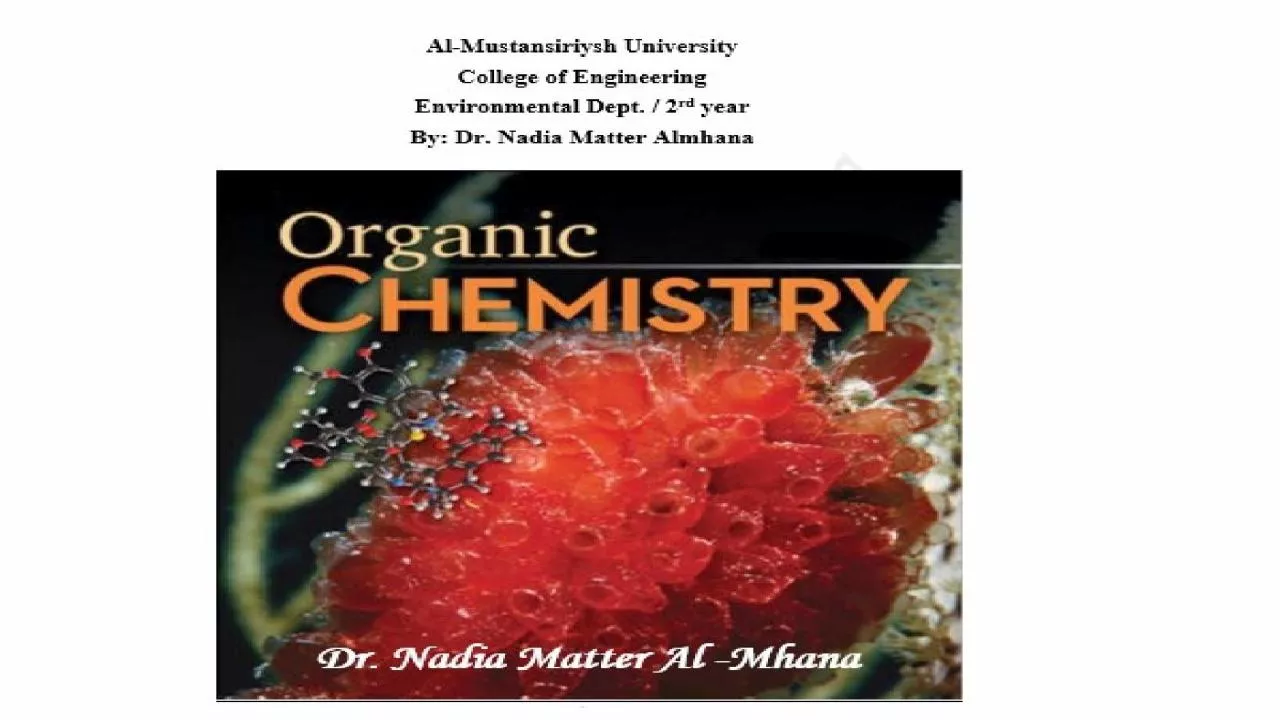

Mn IIIIV These are to be contrasted with the potentially rapid oxidations that occur with photochemically produced oxidants such as H 2 O 2 O 3 the free radicals such as hydroxyl OH and ID: 1010529
Download Presentation The PPT/PDF document "Oxidation Oxidation occurs when an org..." is the property of its rightful owner. Permission is granted to download and print the materials on this web site for personal, non-commercial use only, and to display it on your personal computer provided you do not modify the materials and that you retain all copyright notices contained in the materials. By downloading content from our website, you accept the terms of this agreement.
1.
2.
3.
4.
5.
6. Oxidation Oxidation occurs when an organic loses (donates) one or more electrons to an oxidizing agent (electron acceptor). Abiotic oxidation reactions are typically very slow or nonexistent under environmental conditions. The most common natural oxidants are molecular oxygen, Fe(III), and Mn(III/IV). These are to be contrasted with the potentially rapid oxidations that occur with photochemically produced oxidants such as H2O2, O3, the free radicals such as hydroxyl (-OH) and peroxy (-OOR), and other reactive species such as singlet oxygen O2. Strong oxidizing agents such as H2O2, O3, permanganate), and various chlorine species (e.g., Cl2, ClO2) can oxidize organics during water and wastewater treatmentReduction Reduction occurs when an organic gains (accepts) one or more electrons from a reducing agent (electron donor). Highly oxidized organics (e.g., highly chlorinated organics and nitroaromatics) are susceptible to reduction. Abiotic reduction reactions are quite common, especially under reducing conditions (absence of oxygen). In many cases it is difficult to distinguish between truly abiotic reductions and those mediated by microorganisms. For example, HS- can take part in nucleophilic substitution reactions (see Hydrolysis and Other Nucleophilic Substitutions) and can be involved in reduction reactions where it is oxidized to elemental sulfur (S(s)) with the reduction of the organic. In anaerobic environments HS- is present primarily due to microbial reduction of sulfate; without the microorganisms, the reduction would not take place. Reducing agents found in the environment include HS- ; Fe(II) compounds such as iron sulfides, iron carbonates; iron oxides; iron and other porphyrins; and other reduced organic compounds (natural organic matter).
7.
8.
9.
10.
11.
12.
13.